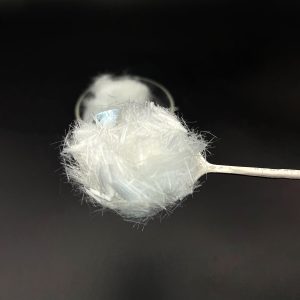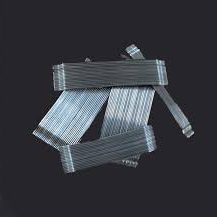Professional solutions on concrete addtives, Concrete Foaming Agent, Superplasticizer, CLC Blocks Additives, and foaming machine
PRODUCT PARAMETERS
Description
Introduction of Row Steel Fiber
Row steel fiber is a kind of fiber that is cold-drawn from high-tensile strength steel wire and then bonded into rows with water-soluble glue.
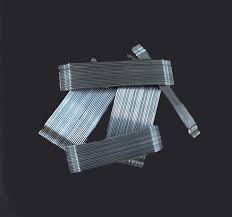
Function of Row Steel Fiber
1. High-purity material selection: In order to ensure the strength and ductility of steel fiber, high-quality low-carbon customized wire rod is selected. The purity is as high as 99.5% or more.
2. Strong anchoring: Steel fiber is specially designed to match different concrete strengths and applications.
3. High strength: The strength of steel fiber is as high as 1000-2300MPa, which is 2-5 times that of ordinary steel bars.
4. High aspect ratio: It ensures the low-doping and high-efficiency performance of steel fiber. Jianbang can customize the corresponding length and aspect ratio according to customer needs.
5. High-quality glue: It ensures that the steel fiber can resist the external force of handling and does not spread before use. And it has no obvious effect on the strength of concrete.
6. Good dispersion: The steel fiber is evenly distributed after secondary dispersion during the concrete mixing process, without clumping or bending, and the steel fiber is easy to use.
Parameters of Row Steel Fiber
| Model | Equivalent diameter(mm) | Fiber length(mm) | Aspect Ratio(mm) | Tensile strength |
| J-65/60 | 0.92 | 60 | 65 | >1100Mpa |
| J-80/60 | 0.75 | 60 | 80 | >1100Mpa |
| J-65/50 | 0.77 | 50 | 65 | >1100Mpa |
| J-65/35 | 0.54 | 35 | 65 | >1100Mpa |
| J-45/35 | 0.77 | 35 | 45 | >1100Mpa |
| J-55/30 | 0.54 | 30 | 55 | >1100Mpa |
| J-55/30 | 0.5 | 30 | 60 | >1100Mpa |
Application Areas of Row Steel Fiber
1. Construction projects: house construction, prefabricated piles, frame nodes, roof waterproofing, underground waterproofing, etc.
2. Industrial floor: cut-slit floor, non-cut floor, seamless floor, pile-supported floor, garage leveling layer, composite floor slab, raft, factory road, pavement, etc.
3. Pipeline engineering: centrifugal tube, vibration and extrusion tube, pump pipe, steel-lined steel fiber concrete pressure tube, etc.
4. Highway bridge engineering: box arch bridge arch ring, continuous box beam, bridge deck, etc.
5. Highway pavement and airport bridge deck engineering: highway pavement, highway pavement in frozen areas, airport pavement, etc.
6. Railway engineering: prestressed railway sleepers, double-block railway sleepers, etc.
7. Water conservancy and hydropower engineering: water flow erosion wear parts, gates, gate canals, ferry canals, dam anti-seepage panels, etc.
8. Port and marine engineering: steel pipe pile anti-corrosion layer, dock facilities, submarine concrete facilities, etc.
9. Other projects: heavy-duty industrial sites/warehouse floors, silos, maintenance and reinforcement projects, underground cables, pipe manhole covers, sewer grates, etc.
Usage of Row Steel Fiber
Construction technical requirements:
1. The cement grade shall not be lower than 425. The water-cement ratio shall not be greater than 0.5.
2. The diameter length of the coarse aggregate shall not exceed 2/3 of the length of the steel fiber.
3. The volume of steel fiber in steel fiber concrete shall not be less than 0.5%, generally between 0.5-3%, and 1.5%–2.5% is recommended; that is, the dosage range per cubic meter of concrete is: 5-30kg, and 15-25kg is recommended.
4. Sea sand shall not be used for mixing steel fiber concrete, and chloride salt is strictly prohibited.
5. In addition to the above provisions, other materials used in steel fiber concrete shall comply with the provisions on raw materials used in reinforced concrete in the current specifications.
6. The consistency of steel fiber concrete can be determined by referring to the consistency required for ordinary concrete in similar projects. Its slump value can be smaller than the corresponding ordinary concrete requirement.
7. The steel fiber concrete cushion layer and surface layer with flat-head joint structure has no foundation reinforcement layer such as ash soil under the cushion layer and at the same time
When the following conditions are met:
a. The thickness of the cushion layer and surface layer before reduction is not more than 130mm.
b. The thickness of the foundation reinforcement layer is greater than the thickness of the cushion layer. Its thickness can be multiplied by the reduction factor 0.75, but shall not be less than 50mm
Material discharge requirements:
Steel fiber and coarse aggregate – stir for 30 seconds – add sand and cement – stir for 30 seconds – add water → stir for 3 minutes
Compacting:
1. When pouring steel fiber concrete, mix and use it, pour continuously, and do not throw away the construction joints before reaching the division joints. It should be vibrated and compacted during pouring.
2. Surface finishing, embossed steel fiber concrete has the characteristics of fine coarse aggregate, large sand rate, and random fiber distribution. It is smoothed mechanically to prevent fiber exposure. The embossing process using an embossing machine can also avoid the phenomenon of fiber exposure caused by pulling. After 24 hours, it should be maintained in time according to the routine. It should be covered with straw bags in summer and keep warm in winter.

Company Profile
Cabr-Concrete is the global leader in Low-Density Cellular Concrete (LDCC), Celluar Light Concrete (CLC), and advanced engineered foam solutions. Known globally for its commitment to research, innovation, and applied expertise, we have been providing engineered foam solutions since the early 2012’s.
We can supply Concrete Fiber over the world. The company has a professional technical department and quality supervision department, a well-equipped laboratory, and equipped with advanced testing equipment and after-sales customer service center.Send us an email or click on the needed products to send an inquiry.
If you want to know more about Row Steel Fiber, please feel free and contact us: sales@cabr-concrete.com

Packaging and Storage of Row Steel Fiber
Packaging: Carton or composite packaging paper bag 20kg/box or bag, 1500kg-2000kg per pallet, and can also be produced and packaged according to user requirements.
Payment
T/T, Western Union, Paypal, Credit Card etc.
Shipment
By air, by sea, by express, as customers request.
FAQs of Row Steel Fiber
- How do you mix steel fibers with concrete?
- Steel fibers are typically mixed during the batching process. Proper mixing techniques and equipment are necessary to ensure uniform distribution and to prevent matting or balling of the fibers.
- Does the addition of steel fibers increase the cost of the concrete?
- Generally, yes, because steel fibers are more expensive than traditional reinforcement methods like rebar. However, they can offer long-term savings due to enhanced durability and reduced maintenance costs.
- Is special equipment needed to place and finish concrete with steel fibers?
- Yes, specialized equipment might be necessary for both mixing and placing the concrete. This includes high-shear mixers and sometimes modified placement equipment to handle the fibers effectively.
- How does the presence of steel fibers affect the setting time of concrete?
- The addition of steel fibers does not significantly affect the setting time of concrete itself, but it may influence the placement and finishing operations due to the need for careful handling to maintain fiber orientation.
- Are there any environmental concerns with using steel fibers?
- Steel fibers themselves are not considered hazardous. However, proper handling is required to avoid inhalation of dust and to manage waste responsibly.
- How does the use of steel fibers compare to traditional rebar in terms of fire resistance?
- Steel fiber-reinforced concrete can have improved fire resistance compared to conventional concrete, as the fibers can help maintain the integrity of the structure at higher temperatures by reducing spalling. However, specific fire ratings depend on the overall design and testing of the concrete mixture.
REQUEST A QUOTE
RELATED PRODUCTS
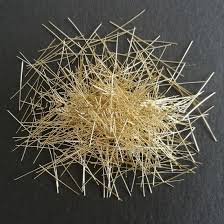
Copper-plated steel fibres

High Quality Polypropylene Bundled Fiber For Concrete Using
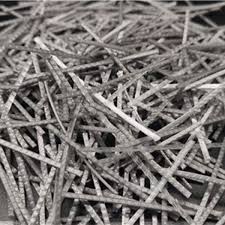
PPF series polypropylene crude synthetic fiber
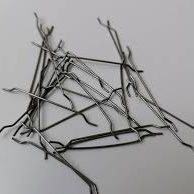
End Hook Steel Fiber for Concrete Reinforcement Steel Fiber
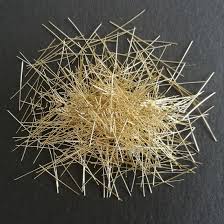
Copper-Coated Microfilament Steel Fiber Fibre for Concrete Use
